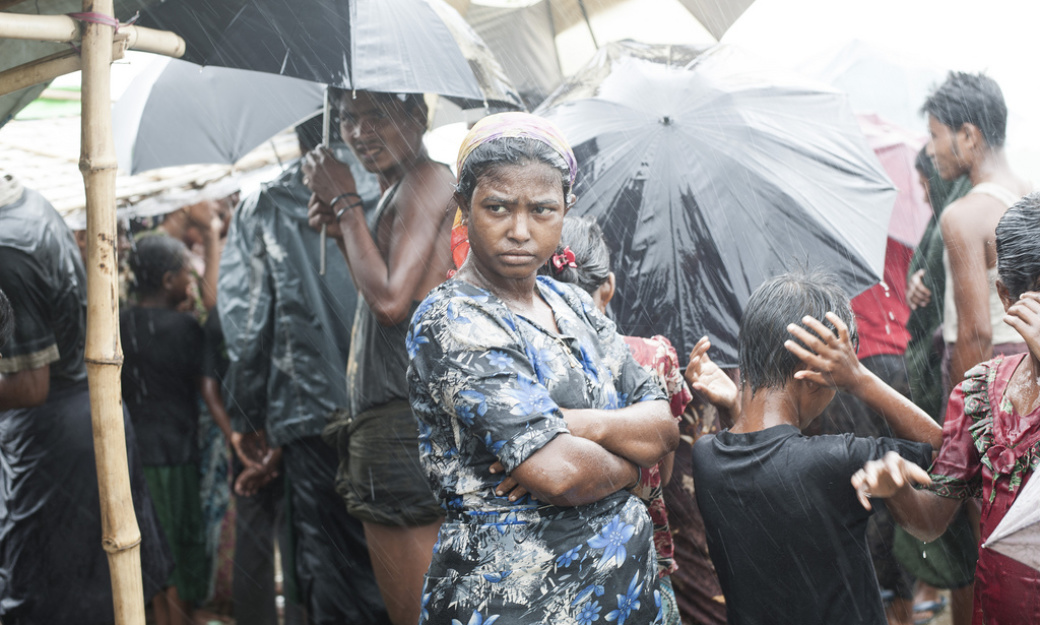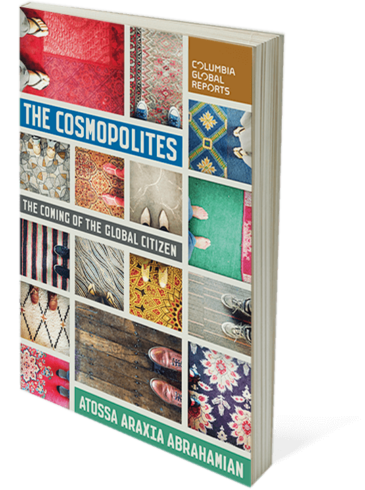How We Missed the Rohingya Ethnic Cleansing—For Decades

Aung San Suu Kyi won the Nobel Peace Prize, in 1991, while she was under house arrest by Myanmar’s ruling military junta. Freed in 2010, she was finally able to travel to Sweden to deliver her acceptance speech in 2012, using the occasion to describe visiting migrant workers and refugees in Thailand who, as she related, cried out to her that she not forget them. They meant, she said, “Don’t forget our plight. Don’t forget to do what you can to help us, don’t forget we also belong to your world.”
It’s impossible, however, to forget someone you’ve never known, which at least until recently seems to be the case for the Rohingya, the Muslim minority group in western Myanmar’s Rakhine State. Thousands of Rohingya are being systematically killed and hundreds of thousands expelled by security forces of the majority Buddhist Myanmar, in acts many are saying constitute genocide. Suu Kyi, who became the de facto leader of Myanmar in 2016, has repeatedly ignored, denied, and even defended the military’s persecution. “Show me a country without human rights issues,” she has said.
 The current ethnic conflict is the result of centuries of fluctuating periods of peace, political strife, and outright bloodshed in a region at the crossroads of South and Southeast Asia. The Rohingya people, who are predominantly Muslim but also include some Hindu, speak their own language, and live primarily in western Myanmar’s Rakhine State, which borders Bangladesh and the Bay of Bengal. Place names and group names have changed repeatedly in the region: the term Rohingya only came into popularity in the 20th Century, Rakhine used to be known as Arakan, and Myanmar was recently Burma.
The current ethnic conflict is the result of centuries of fluctuating periods of peace, political strife, and outright bloodshed in a region at the crossroads of South and Southeast Asia. The Rohingya people, who are predominantly Muslim but also include some Hindu, speak their own language, and live primarily in western Myanmar’s Rakhine State, which borders Bangladesh and the Bay of Bengal. Place names and group names have changed repeatedly in the region: the term Rohingya only came into popularity in the 20th Century, Rakhine used to be known as Arakan, and Myanmar was recently Burma.
Muslim merchants began arriving along the coast of Burma as early as the 8th century, mixing with Buddhist and Hindu peoples already living in the region. The Muslim traders were predominantly doing business with the Buddhist coastal kingdom of Arakan, isolated by a mountain range from the Bamar kingdom, which ruled the central region of Burma.
According to Francis Wade, author of Myanmar’s Enemy Within: Buddhist Violence and the Making of the Muslim “Other,” tensions arising from Islamic expansion provoked the early kings of Burma to launch slave-raiding campaigns in the Muslim villages. Eventually, Buddhism became the de facto religion of the country with the establishment of the kingdom of Mrauk-U in 1429. Mrauk-U was a protectorate of the broader Bengal Sultanate, which included parts of modern day eastern India and Bangladesh. Slave trade from both India and Bengal led to increases in population in the region, as well as ongoing diversification of ethnicity and religion.
By the late 19th Century, Burma was controlled by British colonialists. The British not only brought Indian (predominantly Muslim) migrants in order to expand the labor force, but promoted them to control trade and governance in the Arakan capital. As Wade writes, “More than half of the arable land in the delta was controlled by ‘non-resident landlords,’ the majority Indians.” Much as the Belgians in Rwanda used the Tutsis to subjugate the Hutus, the British used the Indian Muslims to control the Buddhists, a system that created deep resentment. Rakhine Buddhists eventually pushed back, launching a series of anti-Muslim attacks during the 1930s.
During World War II, the Rohingya supported the British, but the Rakhines and other Buddhists, hoping for an end to English imperialism, backed the Japanese. The British armed the Rohingya and established a guerrilla army, the “V Force,” pitting them against Japanese soldiers as well as their Buddhist neighbors, which further intensified the ethnic conflict.
When Burma gained independence in 1948, five Rohingya citizens were actually elected as members of Parliament, and various ethnic groups coexisted relatively peacefully for a time. But the democratic government fell in a bloody 1962 coup that established single-party military rule. General Ne Win’s disastrous modernization campaign, the “Burmese Way to Socialism,” led to widespread malnutrition, lack of access to healthcare, and extreme poverty. Facing the possibility of secession, Ne Win made a deal to grant statehood to the Rakhines, who were recognized as the ethnic majority, while the Rohingya were labeled insurgents. They were further accused of illegally immigrating to Rakhine State, and in 1978, Ne Win drove a quarter million Rohingya across the border, claiming that they were in fact citizens of Bangladesh, where they lived in makeshift camps. To make the charge official, the government passed the 1982 Citizenship Law, which stripped the Rohingya of their citizenship, disenfranchising them and making them ineligible to attend some schools, receive state health care, or obtain certain jobs. The statelessness of the Rohingya has been compared to apartheid, and the military junta that succeeded Ne Win has continued to lean on nationalism and Buddhism to legitimate its authoritarian regime, claiming the Rohingya are sub-human squatters who must be driven out.
The alleged gang rape of a Rakhine woman and the revenge killing of ten random Muslim men led to the violent clashes known as the 2012 Rakhine State riots, when dozens of Rakhines and Rohingya were killed as the two groups targeted one another. In the state capital of Sittwe, some Rohingya were forced into a ghetto, with greatly restricted movement, and anti-Muslim violence flared up in other parts of the country. Then again in 2015 roughly 25,000 Rohingya fled on overcrowded boats as they tried to reach Thailand, Indonesia, and Malaysia by sea, with hundreds dying on the journey south. Cracking down on the Arakan Rohingya Salvation Army, a militant group that has mounted various attacks against Myanmar police and military, is used as justification for attacks on civilian Rohingya, leading many to flee via dangerous routes.
In the past year, the Rohingya have suffered a new series of attacks and threats, pushing hundreds of thousands to escape across the nearby border and into Bangladesh. A February 2017 Flash Report conducted by the UN Human Rights Office of the High Commissioner, described—along with horrifying tales of human butchery—at least 66,000 Rohingya fleeing Myanmar by foot, boat, or clinging onto plastic containers and floating away in attempts to escape Myanmar security forces. The exodus continued until late August, when it intensified. The most recent outbreak of violence followed another clash between ARSA and Myanmar security forces. Unconfirmed reports of the numbers of deaths and houses razed across seventeen villages claim 4,310 houses destroyed and over five hundred killed since late August. The Associated Press reported that 176 ethnic Rohingya villages had been emptied.
The crackdown by Myanmar security forces has forced at least 400,000 Rohingya to flee Rakhine State for neighboring Bangladesh since August. As many as 3,000 may have been killed in the same period. The situation in the makeshift camps patched together in Bangladesh is extremely precarious. Jamila Hanan, independent human rights activist and director of AllRohingyaNow.org, told me that those Rohingya who have not been able to flee, “are now stranded on hilltops or stuck in villages looking for a way out.” Inside the camps, there are reports of widespread hunger and sickness, with little food, paltry shelter, and insufficient medical care.
It seems that Aung San Suu Kyi, presiding over a shaky coalition in a fiercely nationalist Buddhist nation, has forgotten the Rohingya. She recently called media reports on the crackdown “a huge iceberg of misinformation.” She also set up a dystopian sounding “Information Committee,” through which she labeled stories of atrocities and systematic rape “fake information.” George Monbiot, and others—in calling her complicit in crimes against humanity, decrying her forgetting of the Rohingya—have called for the revocation of her Nobel Peace Prize.
The term genocide was coined after World War II not only to alert the world of the crimes being committed, but to prevent future genocides from occurring. Those who know nothing or next to nothing about the Rohingya have been relying on the media to help imagine the dark reality of their current plight. The first step in not forgetting them must be to learn about them in the first place.
John Washington is a translator and writer in New York City. Find more of his work at www.jblackburnwashington.com.

